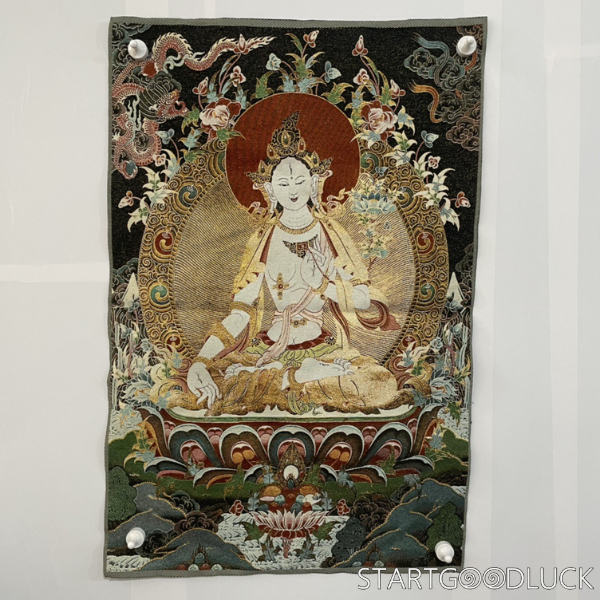This exquisite Thangka painting features White Tara seated on a lotus throne, crafted with traditional Tibetan embroidery. More than a decorative piece, this hand-embroidered Thangka is a sacred symbol of compassion, healing, and longevity in Tibetan Buddhism—revered as the “Mother of Long Life” who protects against illness and guides beings toward spiritual balance. Ideal for spiritual home decor, it resonates with art lovers seeking mindfulness and ethnic heritage.
Origin & Meaning of White Tara
White Tara is an incarnation of Avalokiteshvara’s compassion, distinguished by her seven eyes—one on her forehead, two on her palms, two on her soles, and her physical eyes—symbolizing all-seeing awareness of suffering. In Tibetan Buddhism, she holds a lotus blossom (purity, enlightenment) in her left hand and extends her right hand in a gesture of compassion, promising to heal pain and grant longevity. Revered as a protector of women and children, she embodies nurturing wisdom and the power to transform fear into peace.
Symbolism of the Embroidered Thangka
This Tibetan Thangka embroidery merges artistic craftsmanship with deep spiritual significance. Created using silk threads and gold accents, it showcases White Tara’s serene form against a backdrop of dragons (symbolizing protection) and blooming lotuses (spiritual growth). The white hue of her skin represents purity, while golden robes signify enlightenment. For collectors, this Thangka is not just art—it’s a daily reminder of courage, healing, and the universal call to nurture compassion, making it a profound addition to any mindful living space.

